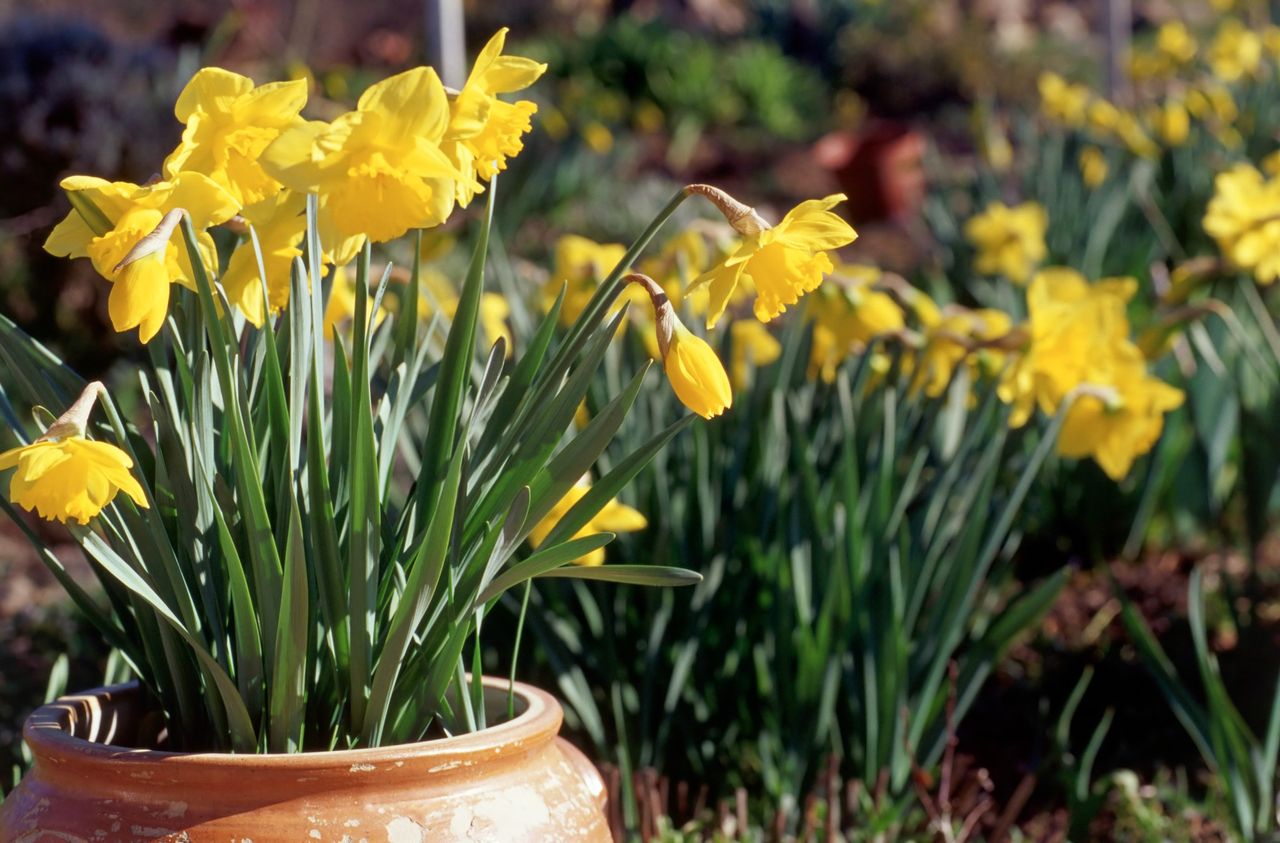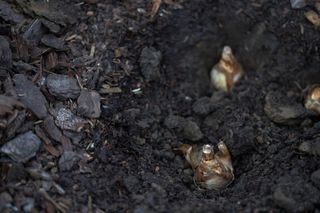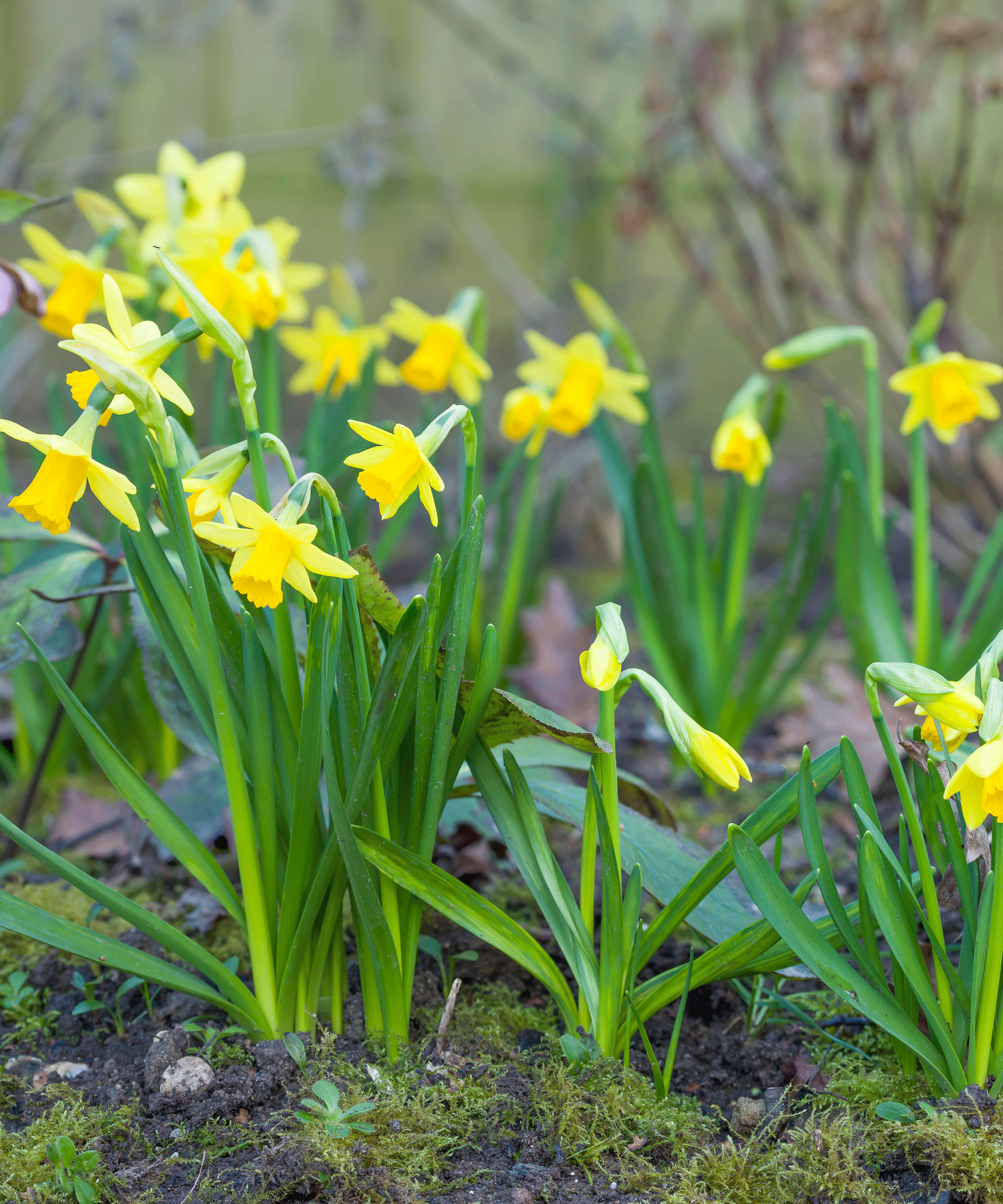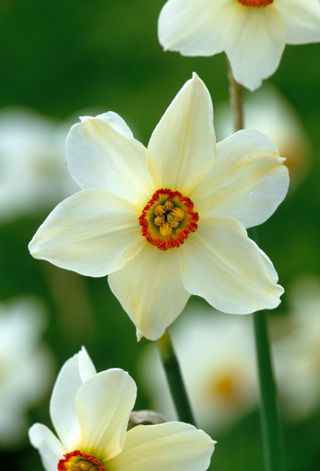
These sunny yellow flowers are one of the most cheerful first signs of spring so if every year you wonder how and when to plant daffodil bulbs to ensure a gorgeous pop of florals in your yard, you're in the right place.
Fall is the best time to plant flower bulbs like daffodils as they take a long time to come through, so need to be safely in the ground any time from September/October, until November.
Fortunately, learning how to plant daffodil bulbs is easy, and there are lots of varieties to choose from, however, you need to get spacing and soil conditions right to ensure you enjoy their yellow blooms next year.
When should you plant daffodil bulbs?
September to October is the perfect time to plant daffodil bulbs to enjoy the blooms in February/March next year. While tulips can wait until November, daffodils really ought to be planted before hard frosts hit.
Where to plant daffodils in the garden
‘Narcissi, or daffodils as they’re commonly known, are very tolerant bulbs, which grow well in light sandy soil and happily in heavy clay,’ says horticulturalist and gardening author Sarah Raven, from Sarahraven.com.
What’s more, they’ll grow equally well in either garden borders or pots, adds gardening expert Sam Marlow, from GardenBuildingsDirect.co.uk. ‘Daffodils bloom well in both sunlight and more shaded spots, making them a perfect choice for gardens of any shape or size,’ he says. However, while daffodils can be planted anywhere with adequate sun for at least part of the day, avoid planting them next to south-facing walls, where it may become too hot for them in the spring. It’s wise to also avoid full shade, as they will be unlikely to flower.
How to plant daffodil bulbs for best success according to Alan Titchmarsh
Titchmarsh advises (as shown in the video below) to first inspect the daffodil bulbs: you want them to be plump and hard – that way, you'll know that they are reliable.
Size isn't the most important thing: smaller bulbs also produce very pretty flowers. These are his other top three tips:
- Dig holes three times the height of the bulb: if they're planted too shallow, they won't flower.
- Plant them the pointy tip up, in well draining soil (aerate the soil first if it's compacted).
- Plant the bulbs in groups for a pretty display, but avoid planting them too close together – allow about 10cm between the bulbs.
How many daffodil bulbs should you plant together?
Those with large gardens can think big. ‘Sixty bulbs per square metre will give you a spectacular show of flowers in spring,’ explains Raven. ‘But daffodils are just as wonderful in pots and containers if you have limited space. Fill your containers with peat-free compost and plant bulbs 4-6in (10-15cm) deep with 2in (5cm) between bulbs for a wonderful display. You can also plant narcissus with dahlias in the same bed in two tiers, giving you wonderful flowers to enjoy from February to April, and then from midsummer until the first frost.’ Also known as a ‘bulb lasagne,’ as garden expert Monty Don told us previously.
Plant your daffodil bulbs in groups of six to ten bulbs in a circular shape in your garden. ‘Daffodils are great flowers for ‘less effort but big results’ gardening,’ explains Marlow, ‘Dig a hole in the soil, which is about six inches deep, and then plant anywhere from three to ten bulbs together, depending on how wide the hole is.’
It’s important not to overcrowd the bulbs, otherwise they can’t grow properly and will fail to fully bloom, so Marlow recommends leaving about four to six inches of space between each bulb. If you have any mulch or compost, spread some over the planting area to finish.

Should I water daffodil bulbs when I plant them?
To help your bulbs settle into their new home, water your daffodils straight after planting. ‘This will set the soil and ensure no air pockets are in the ground,’ advises Marlow. ‘After that, it’s okay to leave them as they will be watered by rain through the winter,’ says Raven. ‘If there’s a long dry spell, water accordingly, paying particular attention to pots.’
Marlow agrees, ‘If it’s especially dry and no rain is forecast, continue to water the daffodils once a week for the next few weeks, as this is the period when the bulbs are developing roots.’

Are there any varieties of daffodils that shouldn't be planted together?
Daffodils can be planted anywhere, in borders, in grass and in containers, and there are no rules as to which kinds can be planted together. ‘However, some of the more delicate varieties such as Lemon Drops and Kokopelli are more suited to pots,’ suggests Raven. ‘You can create a brilliant show by planting one variety to a pot. Mix and match different containers and group them; it’s an easy way to add splashes of color and scent to your garden.’
For smaller plots, it’s a nice idea to plant different varieties of daffodils together to have an extended bloom in your garden with a range of colors, says Marlow. ‘Daffodils generally grow in height anywhere from 2in (5cm) to 20in (50cm) and can be planted together to create a varied and colorful display.’
Having said that, we'd avoid planting tall and large varieties such as Dutch Master and Spellbinder next to small delicate ones. such as February Gold or Hawera, as the little flowers will be lost among the huge ones and other big garden plants in your yard.

Narcissus 'Old Pheasant's Eye', photographed by Jonathan Buckley for Sarahraven.com
Which varieties of daffodils should I plant?
Daffodils come in lots of different types, and it's really down to personal taste which ones you want to grow. ‘Daffodils grow well in pots, but it’s important to choose the right sized container depending on how big the plant variety is,’ explains Marlow.
‘The Toto variety is considered to be a dwarf daffodil, so will bloom nicely in a small pot, and is ideal for windowsills. Meanwhile, the Carlton daffodil variety is known for its large scale growth with big flowers and strong stems, and these are ideal for planting in the ground.’
If you want to set your garden out from the rest, you can hunt out some of the more unusual types of daffodils: ‘For example, take a look at the Cassandra and Maximus (Narcissus Hispanicus) varieties. The latter are traditional yellow trumpet daffodils with a wonderful golden shade and are super easy to grow.’
Raven has some suggestions too. 'Narcissus pseudonarcissus Lobularis (Lent Lily Daffodil) is the longest lasting, easiest, and most successful daff to grow for naturalizing, while Avalanche is a prolific flowerer with many heads to a stem, and it has the strongest scent of any I have grown.'
For a great-all-rounder, Raven recommends Old Pheasant's Eye (Narcissus poeticus var. recurvus), or for flowers later in the season, Blushing Lady. 'It’s a lovely creamy flower with a pink perianth at the centre,’ she says.
Common Daffodil bulb planting problems
The most common problems with daffodils are:
- Shallow planting: this will cause the plant to grow without flowering. Plant them at a depth that's three times the bulb size. This will also help protect your bulbs from squirrels.
- Late frosts: if your daffodil buds have turned brown and withered before opening, they've been blasted by an unseasonal frost. You may find that it helps to stagger your daffodil planting, for example once every couple of weeks up until November.
- Root rot: this is the most common cause for daffodil plants becoming yellow and weak and wilting. Improve soil drainage to avoid this problem.
Join our newsletter
Get small space home decor ideas, celeb inspiration, DIY tips and more, straight to your inbox!
Anna is a professional writer with many years of experience. She has a passion for contemporary home decor and gardening. She covers a range of topics, from practical advice to interior and garden design.
- Jenny WoodFreelance Writer